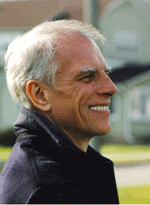This is the story of a very special Christmas in the lives of the Graupner family. Carl and Gertrude and their five children (Ken, Phil, Jim, John and Cathy) farmed just outside the village of Spencer, Wisconsin. Chuck was not yet born.
Carl’s mother, Anna, and his sister, Johanna, lived in a small German village in the Taunus Mountains called, Schlangenbad.
In July 1951, Anna and Hanni came from Germany by steamship to visit the three families in America. What was to be a three month’s visit was extended to be actually nine. They chose to come first to us, on the farm, and then for Christmas.

Anna and Hanni came from Germany by steamship
 Long before, Hanni had made special plans, such as baking and assemblying a Knusperhauschen, or cookie house. She worked at it evenings after the five children were asleep.
Long before, Hanni had made special plans, such as baking and assemblying a Knusperhauschen, or cookie house. She worked at it evenings after the five children were asleep.
Hanni assembled a Knusperhauschen
Oma was busy knitting mittens, scarves, and  sweaters. She baked several large Stollen and stored them away and I made my usual supply of cookies and breads.
sweaters. She baked several large Stollen and stored them away and I made my usual supply of cookies and breads.
Oma was busy knitting
We had invited my brother’s family and other friends and day by day excitement grew. Alas! All invitations had to be cancelled, except for the grandparents, as the oldest three boys, one by one, came down with the mumps.
Nevertheless, Hanni was determined to continue with her plans. She insisted we trim the tree on the afternoon of the 24th, so we could celebrate on Christmas Eve. This was no easy task, since all the boys’ beds had been moved to the “blue” room next to the living room so they could be warmer. The upstairs then was hardly heated. Sliding doors could be closed for privacy, but little noses pressed against the crack until paper covered it. Going to the bathroom meant being covered with a quilt and promising not to peek as they were carried out through the living room.

Little noses pressed against the crack...
At last the doors opened to reveal a prettily decorated tree, all the old favorites hanging there, and new ornaments from Germany glistening!
Five-year-old John managed to attend the Christmas program at church and was brought back by Grandpa and Grandma Boock, excitedly carrying the generous Christmas sack, to the envy of the rest.

John brought back the generous Christmas sack
Boxes were opened and happiness reigned. Perhaps each child can still remember what the gifts were. I only remember Ken’s box revealing his long-awaited b.b. gun and a coonskin cap. We all laughed heartily (except the three boys, for it hurt too much) to see Oma discover three nightgowns. Each family knew she needed one.Later when the children were asleep, and we grown-ups sat down to enjoy good wine and Stollen, we peeked into the “blue” room. There they lay with cheeks as fat as chipmunks”. On Ken’s face an expression of pure bliss lay. In his arms the b.b. gun was cradled and on his tousled head was the coonskin cap!

On Ken's face an expression of pure bliss lay
"A Memorable Christmas" was written by Gertrude Graupner for the Christmas 1983 edition of "The Settler." Introduction and drawings by Jim Graupner accompanied the story.

























 Shortly after that I took some genealogy classes offered through adult education and then I was hooked. Once we moved to this area I joined a local genealogy society, St. Croix Valley Genealogical Society, which meets here in River Falls. I have been the treasurer (not president) for that organization for the past 20 years. Even though I have no ancestors who ever lived in this part of the state, this group was and still is a wonderful inspiration. We research together, go to regional and national genealogy conferences together, and meet once a month with our genealogy society and four times a year with the Germanic Genealogy Society, based in St. Paul. Now I teach beginning genealogy classes with two other members of SCVGS to help others in the adventure of finding their own ancestry.
Shortly after that I took some genealogy classes offered through adult education and then I was hooked. Once we moved to this area I joined a local genealogy society, St. Croix Valley Genealogical Society, which meets here in River Falls. I have been the treasurer (not president) for that organization for the past 20 years. Even though I have no ancestors who ever lived in this part of the state, this group was and still is a wonderful inspiration. We research together, go to regional and national genealogy conferences together, and meet once a month with our genealogy society and four times a year with the Germanic Genealogy Society, based in St. Paul. Now I teach beginning genealogy classes with two other members of SCVGS to help others in the adventure of finding their own ancestry.




+and+Christian+Frederick+Boock.png)











